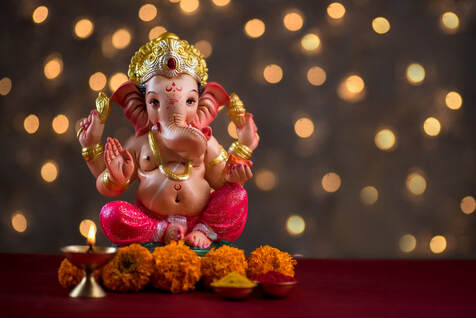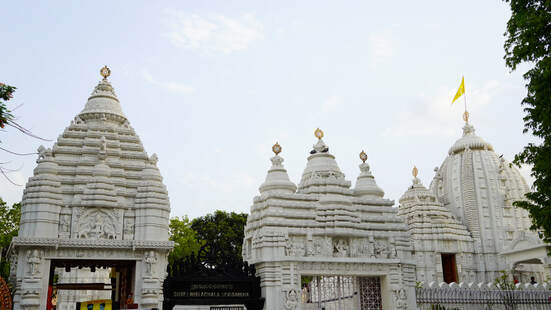32 MISTAKES WE SHOULD AVOID DURING OUR DAILY WORSHIP
पूजा अर्चना में वर्जित काम
१) गणेश जी को तुलसी
२) देवी पर दुर्वा
३) शिव लिंग पर केतकी फूल
४) विष्णु को तिलक में अक्षत
५) दो शंख एक समान
६) तीन गणेश
७) तुलसी चबाना
८) द्वार पर जूते चप्पल उल्टे
९) दर्शन करके बापस लौटते समय घंटा
१०) एक हाथ से आरती लेना
११) ब्राह्मण को बिना आसन बिठा
ना
१२) स्त्री द्वारा दंडवत प्रणाम
१३) बिना दक्षिणा ज्योतिषी से पूछना
१४) घर में अंगूठे से बड़ा शिवलिंग
१५) तुलसी पेड़ में शिवलिंग
१६) गर्भवती महिला को शिवलिंग स्पर्श
१७) स्त्री द्वारा मंदिर में नारियल फोडना
१८) रजस्वला स्त्री का मंदिर प्रवेश
१९) परिवार में सूतक हो तो पूजा प्रतिमा स्पर्श
२०) शिव जी की पूरी परिक्रमा
२१) शिव लिंग से बहते जल को लांघना
२२) एक हाथ से प्रणाम
२३) दूसरे के दीपक में अपना दीपक जलाना
२४) अगरबत्ती जलाना बांस की सींक वाली
२५) देवता को लोभान या लोभान की अगरबत्ती
२६) स्त्री द्वारा हनुमानजी शनिदेव को स्पर्श
२७) कन्या ओ से पैर पडवाना
२८) मंदिर में परस्त्री को ग़लत निगाह से देखना
२९) मंदिर में भीड़ में परस्त्री से धक्का मुक्की
३०) साईं की अन्य प्रतिमाओं के साथ स्थापना
३१) शराबी का भैरव के अलावा अन्य मंदिर प्रवेश
३२) किसी तांत्रिक का दिया प्रसाद,
ये पूर्ण रूप से वर्जित हैं!
1) Never offer Sri Ganesh Tulsi leaves
2) Never offer durwa grass or tulsi to Ma Durga
3) Never offer Ketki flower on Shiva ling
4) Never offer rice to Sri Hari Vishnu
5) Never keep two sunk conch shell 🐚 of the same type
6) Never keep three Sri Ganesh on one shrine
7) Never eat or munch on tulsi leaves
8) Never leaves shoes upside down Mandir entrance
9) Do not ring bell ghanta whilst leaving Mandir after darshan
10) Never take Aarti with one hand
11) Never let a brahman sit without an assan
12) A lady or girl should not do dandwat pranaam - offering pranayam by lying flat
on ground
13) Never leave an astrologer without paying
14) Never keep a Shiv ling inside a house which is longer than a thumb
15) Never keep Shiv Ling and Tulsi plant together
16) Pregnant ladies should not take ashirvadh by touching feet
17) Ladies should not break a coconut inside a Mandir
18) Ladies should not enter Mandir or touch dirties during menstruation
19) During sutak - birth and death in family - all family members should avoid any f
form of prayers for 13 days
20) Never ever do full parikarma of Shiv Ling
21) Never cross or step over water that has been through the Shiv Ling or any other
statue
22) Never do pranayam with one hand
23) Never light one diya with another
24) Never use agarbathi - instead use dhoop because of use of bamboo in agarbathi
25) Never offer lobhaan to
Dev and deviya
26) Ladies should avoid Abhishek of Hanuman ji or
Shani Dev
27) Never let unmarried girls touch feet
28) Never see other ladies in Mandir with evil eye
29) Avoid being bumped into others especially ladies in Mandir
30) Never keep statue of Satya Sai baba or your own guru on your main puja shrine
31) A intoxicated person should never enter a Mandir except Sri Bhairav mandir
32) Never take prasad from a tantrik priest.
How much do we know about our holy shrines?
Hindus believe and worship many teerath (holy shrines) mainly located
in India.
They could be rivers, birth places of our avatars gods like Sri Ram and
Sri Krishna or
any of the divine places they visited.
Below is a PDF file encompassing all principal holy shrines commonly
visited by
Hindus from world over.
Download the Hindu Cosmos 2024 calendar below.
Learn about Tulsi leaf healing powers.


